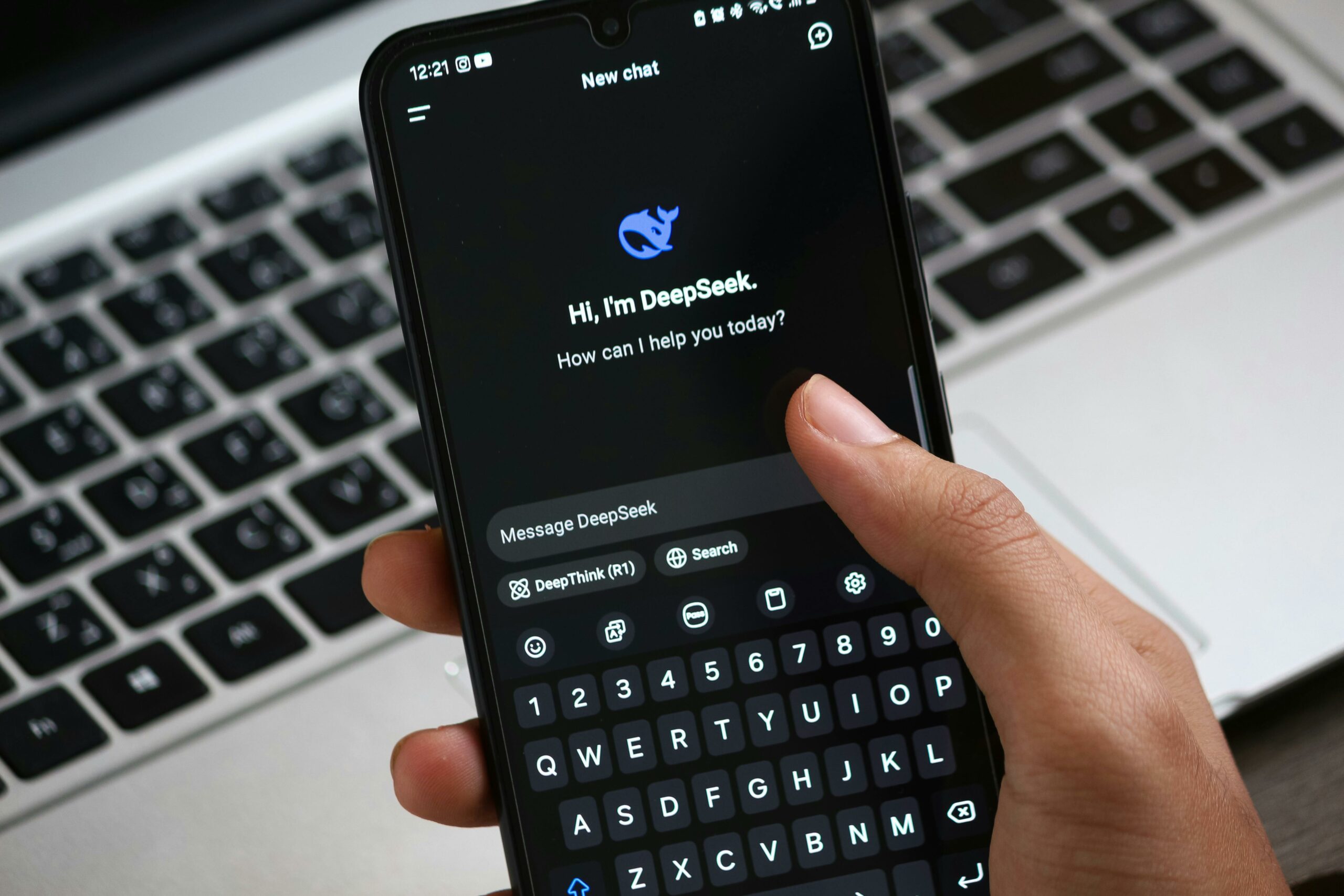 Google’s AI language tool for travel is changing the way travelers learn languages, making communication and interactions easier worldwide. Google has unveiled its latest innovation: a smart language learning platform designed to compete directly with established services like Duolingo. This new offering represents a meaningful change in how people prepare for international travel and engage with foreign languages. By using
Google’s AI language tool for travel is changing the way travelers learn languages, making communication and interactions easier worldwide. Google has unveiled its latest innovation: a smart language learning platform designed to compete directly with established services like Duolingo. This new offering represents a meaningful change in how people prepare for international travel and engage with foreign languages. By using
Google’s extensive language resources and technical capabilities, this tool make learning new languages and communication abroad more accessible than ever before.
The Evolution of Language Learning Applications

Language learning applications have changed dramatically over the past decade. From basic vocabulary flashcards to full platforms with game elements, these tools have made learning languages more engaging and accessible. Duolingo, with its distinctive owl mascot and game-like approach, has led this market since its launch in 2011, reaching over 500 million downloads worldwide.
Google’s entry into this market acknowledges both the huge potential and current limitations in online language education. While many existing platforms are good at teaching vocabulary and basic grammar, they often fail to prepare users for real-world communication, especially the quick, context-dependent conversations travelers often face.
Key Features of Google’s Language Learning Platform
Google’s new language learning tool offers several innovative features that set it apart from other options currently available:
Contextual Learning Based on Travel Plans

Unlike traditional language apps that follow a predetermined curriculum, Google’s platform allows users to input their specific travel details, including:
- Destination cities and regions
- Length of stay
- Purpose of travel (business, leisure, education)
- Specific activities planned (restaurant dining, museum visits, business meetings)
The system then customizes learning modules around these parameters, focusing on vocabulary and phrases most relevant to the user’s actual needs. According to preliminary research by Google, this contextual approach improves phrase retention by approximately 37% compared to standardized learning sequences.
Real-Time Conversation Practice with AI
Perhaps the most groundbreaking aspect of Google’s platform is its interactive conversation practice tool. This feature lets users practice realistic dialogues with a responsive system that:
- Responds naturally to a wide range of inputs
- Adjusts speaking pace based on user comprehension
- Recognizes and corrects pronunciation errors
- Mimics regional accents and dialects
- Provides instant feedback on grammar and word choice
This capability solves a major problem with google AI language tool for travel: the lack of opportunity to practice spontaneous conversation without a human partner. Google’s internal testing shows that users who practice with the conversation tool for just 15 minutes daily develop comprehension skills equal to those gained after 45 minutes of traditional app-based learning.
Augmented Reality Translation Assistance
Building upon their existing Google AI language tool for travel Lens technology, the new platform includes a visual translation feature specifically designed for travelers. When encountering written text abroad, such as restaurant menus, street signs, or public transportation schedules, users can simply point their smartphone camera at the text to receive:
- Instant translations overlaid on the original text
- Audio pronunciation guides
- Cultural context notes for potentially confusing items
- Alternative phrasing suggestions
This feature works offline, solving a major challenge for international travelers who often lack reliable internet access.
Cultural Competence Training
Recognizing that effective communication involves more than just language proficiency, Google has integrated cultural competence modules into their platform. These brief lessons cover:
- Appropriate greetings and gestures
- Tipping customs and payment expectations
- Common conversation taboos
- Basic etiquette guidelines specific to the region
This cultural context greatly improves a traveler’s ability to navigate social situations successfully, reducing the chance of accidental misunderstandings or offense.
How This Technology Changes the Travel Experience

The introduction of Google’s language learning platform transforms several aspects of international travel:
Pre-Trip Preparation Efficiency
Traditional language preparation for travel often involved either extensive courses (time-consuming and expensive) or basic phrasebooks (limited in scope). Google’s new alternative offers a middle path: focused, efficient preparation tailored specifically to planned activities.
Research shows that travelers typically need only about 350-500 phrases to handle 80% of common situations abroad. By identifying and prioritizing these high-value expressions based on individual travel plans, Google’s platform enables effective preparation in much less time than comprehensive language courses.
Reduced Travel Anxiety
Studies consistently show that language barriers rank among the top sources of anxiety for international travelers. According to a 2023 survey by the International Tourism Association, 68% of respondents reported moderate to severe anxiety about language difficulties when visiting countries where they did not speak the native language.
By providing both pre-trip training and in-the-moment assistance, Google’s platform addresses this anxiety from multiple angles. The conversation practice builds confidence before departure, while the augmented reality features provide a safety net during the actual journey.
More Authentic Cultural Experiences
When travelers have even basic language skills, their experiences often go beyond the typical tourist path. Local residents generally respond more positively to visitors who make an effort to learn the local language, often leading to more meaningful interactions and authentic experiences.
Google’s platform encourages this language effort without requiring years of study. By focusing on practical communication rather than perfect grammar, it helps travelers start engaging with locals almost immediately.
Potential for Spontaneous Itinerary Changes
One of the most limiting aspects of language barriers is how they restrict spontaneity. Travelers without language skills often stick rigidly to pre-planned activities where communication challenges have been anticipated and addressed.
With google AI language tool for travel providing real-time support, users report feeling more comfortable exploring unplanned opportunities and veering from established tourist routes. This flexibility often leads to discovering hidden gems and creating more memorable travel experiences.
Market Impact and Adoption Projections

Industry analysts predict major changes in the language learning market following Google’s entry. With over 2 billion active Android devices worldwide and Google’s effective cross-platform approach, the new tool is expected to reach an enormous user base almost immediately.
Early adoption statistics show particularly strong interest among:
- Business travelers (estimated 42% adoption rate within the first year)
- Independent tourists aged 25-40 (projected 38% adoption)
- Study abroad students (anticipated 65% adoption)
The language education industry, valued at approximately $17.3 billion globally in 2023, will likely undergo significant changes as established companies respond to Google’s new offering.
Limitations and Considerations

Despite its impressive capabilities, Google’s language platform has some limitations:
Privacy Considerations
The personalized nature of the platform requires collecting significant data about travel plans and activities. While Google has implemented stronger privacy measures for this sensitive information, users should be mindful of the data they share when using the service.
Depth of Language Learning
While excellent for travel purposes, the platform doesn’t claim to create full fluency or complete language mastery. Users seeking academic or professional language skills will still need traditional language education methods alongside this tool.
Connection Requirements
Though many features work offline, the most advanced capabilities need occasional internet connectivity for updates. Travelers in very remote areas may experience reduced functionality.
Current Language Selection
At launch, Google’s platform offers 24 languages, covering about 80% of common travel destinations. However, this leaves many languages unavailable, especially those spoken in less frequently visited regions.
The Future of Travel Language Technology
Google’s entry into this space likely represents just the beginning of advanced technology applications for travel communication. Industry experts anticipate several developments in the near future:
- Integration with smart glasses and other wearable devices for even more convenient translation experiences
- Improved regional dialect recognition to better handle language variations
- Cross-platform integration, allowing smooth transitions between devices
- Social learning features enabling travelers to connect with others visiting the same destinations
Practical Implementation for Travelers

For those wanting to use Google’s new language platform for upcoming travel, experts recommend starting approximately 6-8 weeks before departure. This timeline gives enough practice with essential phrases while avoiding the mental overload that comes from trying to learn too much too quickly.
A recommended approach includes:
- 15-20 minutes daily with the conversation practice tool
- Focus on practical scenarios specific to planned activities
- Emphasis on listening comprehension, which typically develops faster than speaking ability
- Regular use of the cultural information to build understanding around the language
Conclusion
Google’s new language learning platform represents a significant step forward in how travelers can prepare for and navigate international experiences. By combining personalized learning, conversation practice, visual translation assistance, and cultural education, this tool tackles the most common language challenges travelers face abroad.
While not a replacement for dedicated language study for those seeking fluency, it offers an efficient, practical solution for travelers wanting to enhance their journeys through better communication. As technology continues improving, the difference between traditional and tech-assisted language learning will likely shrink further, making international travel more accessible and immersive for everyone.
For travelers planning their next international adventure, Google AI language tool for travel, trying this new platform could mean the difference between simply seeing a new culture and truly connecting with it. Readers interested in learning more about helpful travel tools should check out our other articles on innovations changing the travel experience. Share your thoughts on how these language tools might affect your future travel plans in the comments section below!



Leave a Reply